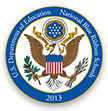Responsive Classroom Approach PreK-8th
Responsive Classroom Approach
Responsive Classroom is an evidence-based approach to teaching and discipline that focuses on engaging academics, positive community, effective management, and developmental awareness through integrating academics with social-emotional skills.
Our professional development tools and library of resources help our elementary and middle school educators create safe, joyful, and engaging classrooms and communities where students can thrive and develop strong social and academic skills.
Independent research has found that the Responsive Classroom approach is associated with higher academic achievement in math and reading, improved school climate, and higher-quality instruction. It has been described by the Collaborative for Academic, Social, and Emotional Learning (CASEL) as one of the most “well-designed evidence-based social and emotional learning (SEL) programs.”
Responsive Classroom Practices & Strategies
The Responsive Classroom approach consists of tools that build academic and social-emotional competencies. These core classroom practices are the heart of an NCA education.
PreK-8th Shared Classroom Practices
Interactive Modeling
An explicit practice for teaching procedures and routines (such as those for entering and exiting the room), as well as academic and social skills (such as engaging with the text, or giving and accepting feedback).
Teacher Language
The intentional use of language enables students to engage in their learning and develop the academic, social, and emotional skills they need to be successful in and out of school.
Logical Consequences
A non-punitive response to misbehavior allows teachers to set clear limits and allows students to fix and learn from mistakes while maintaining their dignity.
Interactive Learning Structures
Purposeful activities that give students opportunities to engage with content in active, hands-on, and interactive, social ways.
K–4 Primary School Classroom Practices
Morning Meeting
Everyone in the classroom gathers in a circle for twenty to thirty minutes at the beginning of each school day and proceeds through four sequential components: greeting, sharing, group activity, and morning message.
Establishing Rules
Teachers and students work together to name individual goals for the year and establish rules that will help everyone reach those goals.
Energizers
Short, playful, whole-group activities that are used as breaks in lessons.
Quiet Time
A brief, purposeful, and relaxed time of transition that takes place after lunch and recess, before the rest of the school day continues.
Closing Circle
A five to ten-minute gathering at the end of the day that promotes reflection and celebration through participation in a brief activity or two.
5th-8th Middle School Classroom Practices
Responsive Advisory Meeting
A daily routine organized around one of seven distinct purposes. This helps build meaningful connections and develops respectful and trusting relationships, while also meeting students’ developmental needs. The meetings have four sequential components: arrival welcome, announcements, acknowledgments, and activity.
Investing Students in the Rules
A process facilitated by the teacher is composed of four steps: setting SMART goals, connecting the goals to rules, connecting the rules to concrete behaviors, and making the rules come alive.
Brain Breaks
Short breaks in whole-class lessons that give students a chance to move and interact are used to increase focus, motivation, learning, and memory.
Active Teaching
A strategy for delivering curriculum content where the teacher presents, explains, illustrates, and demonstrates content in a way that enables students to meet a learning objective. The three phases of active teaching are Teach and Model, Student Collaboration, and Facilitate Reflection.
Student Practice
A process that follows active teaching where students explore and practice the content and skills taught during a lesson with the teacher’s guidance. This lets the teacher identify and correct students’ thinking before they practice further on their own.
Small-Group Learning
A structured way for students to work together on a specific learning goal, assignment, or project that is organized by the teacher.

